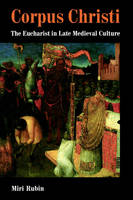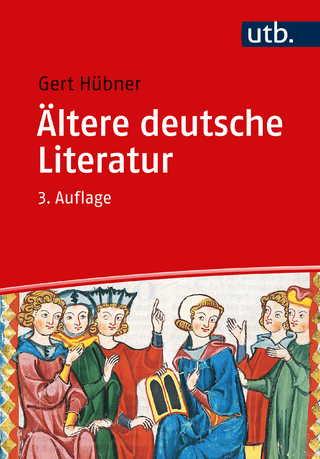
Corpus Christi
The Eucharist in Late Medieval Culture
Seiten
1992
Cambridge University Press (Verlag)
978-0-521-43805-6 (ISBN)
Cambridge University Press (Verlag)
978-0-521-43805-6 (ISBN)
A paperback edition of Miri Rubin's highly successful study of later medieval culture seen through its central symbol, the eucharist.
This book studies later medieval culture [c. 1150–1500] through its central symbol: the eucharist. From the twelfth century onwards the eucharist was designed by the Church as the foremost sacrament. The claim that this ritual brought into presence Christ's own body, and offered it to believers, underpinned the sacramental system and the clerical mediation upon which it depended. The book explores the context in which the sacramental world was created and the cultural processes through which it was disseminated, interpreted and used. With attention to the variety of eucharistic meanings and practices - in procession on the feast of Corpus Christi, devotions, prayers, drama, in dissent, abuse and doubt - the author reveals and considers ways in which a religious culture is used as a language for the articulation of order and power, as well as for the most private explorations. The book moves from the 'design' of the eucharist in the twelfth century to its re-design in the sixteenth - a story of the emergence of a symbol, its use and interpretation and final transformation.
This book studies later medieval culture [c. 1150–1500] through its central symbol: the eucharist. From the twelfth century onwards the eucharist was designed by the Church as the foremost sacrament. The claim that this ritual brought into presence Christ's own body, and offered it to believers, underpinned the sacramental system and the clerical mediation upon which it depended. The book explores the context in which the sacramental world was created and the cultural processes through which it was disseminated, interpreted and used. With attention to the variety of eucharistic meanings and practices - in procession on the feast of Corpus Christi, devotions, prayers, drama, in dissent, abuse and doubt - the author reveals and considers ways in which a religious culture is used as a language for the articulation of order and power, as well as for the most private explorations. The book moves from the 'design' of the eucharist in the twelfth century to its re-design in the sixteenth - a story of the emergence of a symbol, its use and interpretation and final transformation.
List of illustrations; Acknowledgements; List of abbreviations; Introduction; 1. Designing the eucharist: new ideas and procedures in the mass from c. 1000; 2. Beyond design: teaching and reception of the eucharist; 3. A feast is born: Corpus Christi - the eucharistic feast; 4. The living feast: sermons, fraternities, processions and drama; 5. Symbols in motion: the many readings of the eucharist; Conclusion; Bibliography; Index.
| Erscheint lt. Verlag | 29.10.1992 |
|---|---|
| Zusatzinfo | 19 Halftones, unspecified |
| Verlagsort | Cambridge |
| Sprache | englisch |
| Maße | 154 x 229 mm |
| Gewicht | 702 g |
| Themenwelt | Geschichte ► Allgemeine Geschichte ► Mittelalter |
| Geisteswissenschaften ► Geschichte ► Regional- / Ländergeschichte | |
| Religion / Theologie ► Christentum ► Gebete / Lieder / Meditationen | |
| Religion / Theologie ► Christentum ► Kirchengeschichte | |
| ISBN-10 | 0-521-43805-5 / 0521438055 |
| ISBN-13 | 978-0-521-43805-6 / 9780521438056 |
| Zustand | Neuware |
| Haben Sie eine Frage zum Produkt? |
Mehr entdecken
aus dem Bereich
aus dem Bereich
eine neue Geschichte des Mittelalters
Buch | Hardcover (2023)
C.H.Beck (Verlag)
38,00 €


